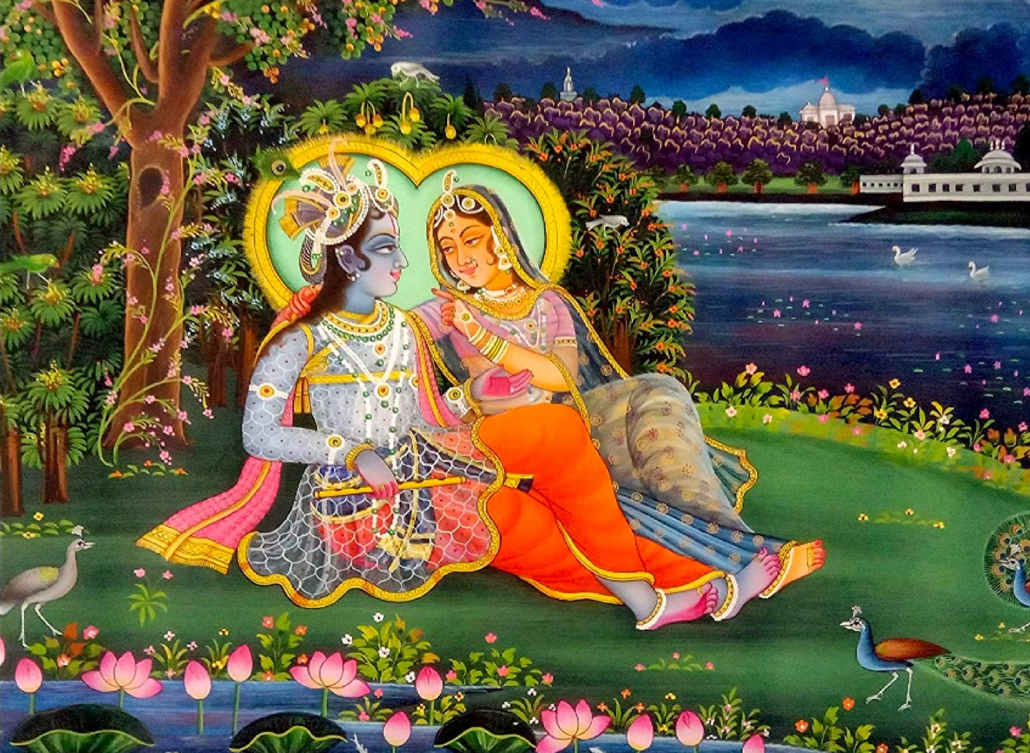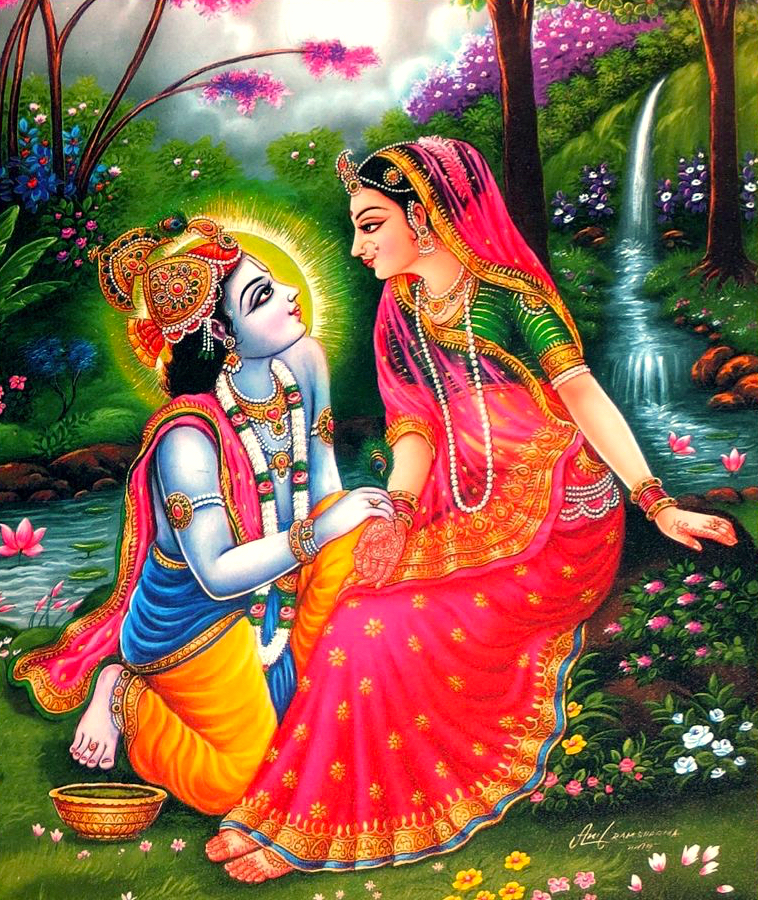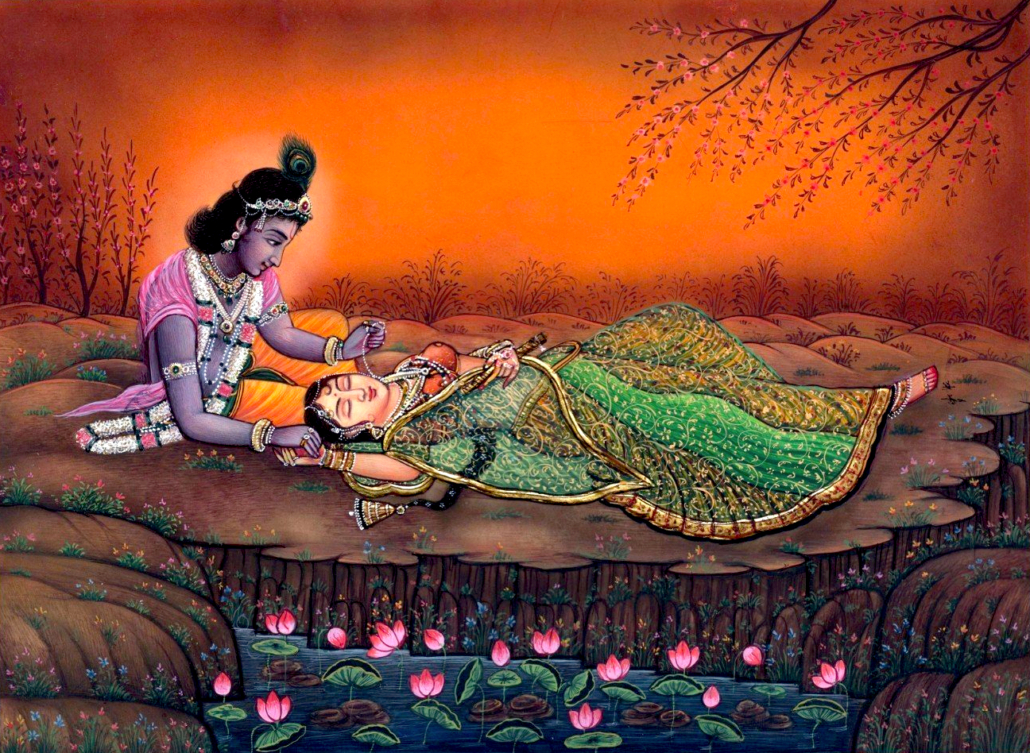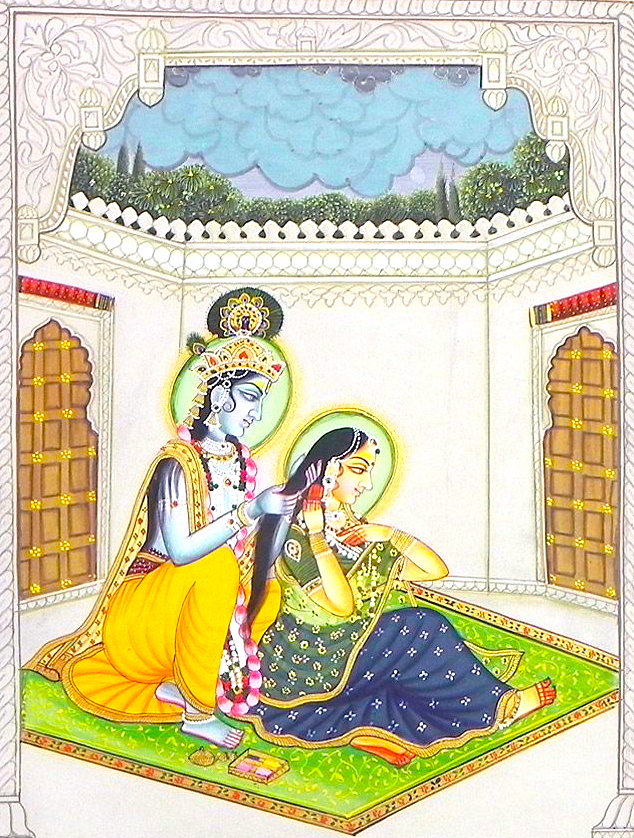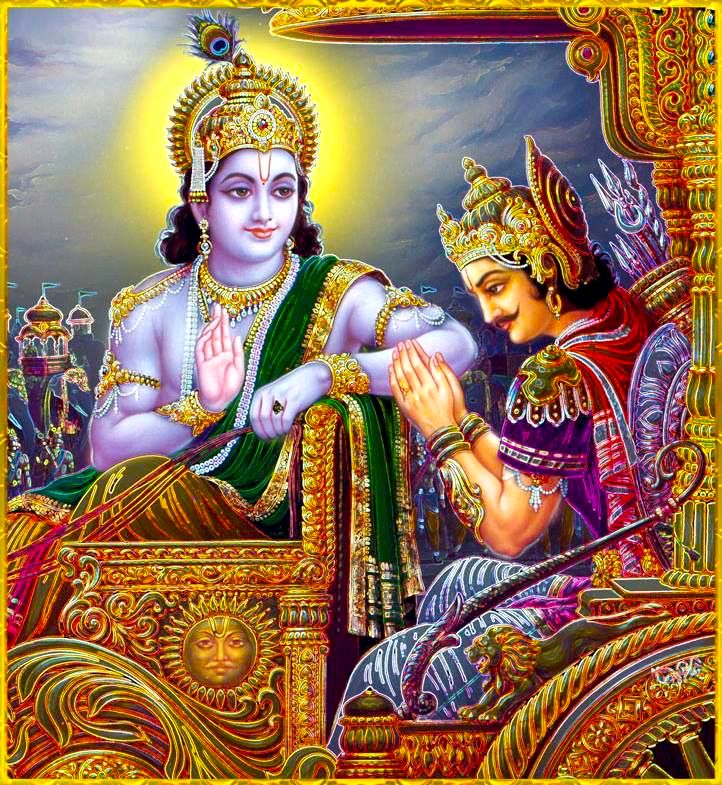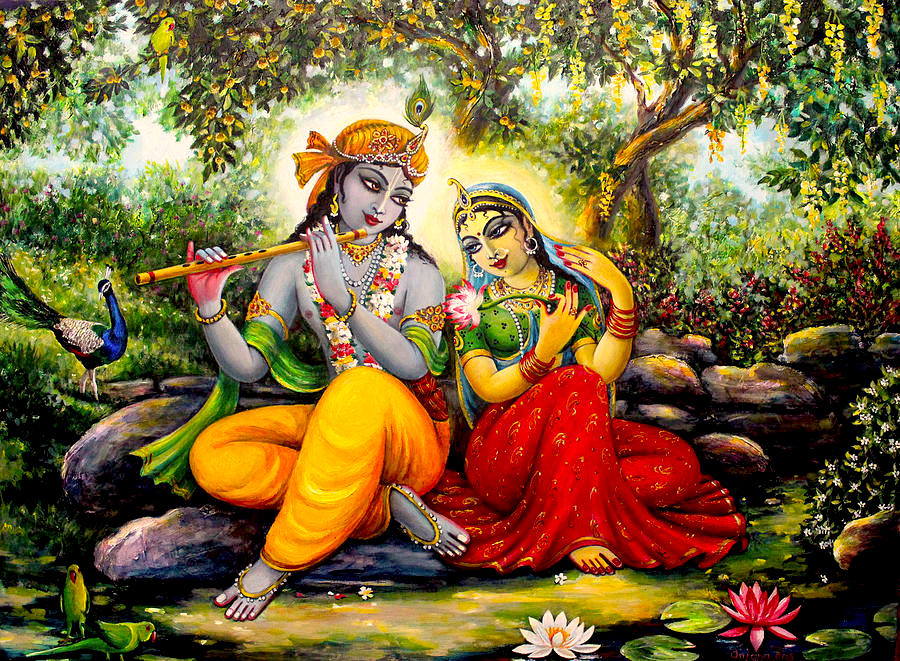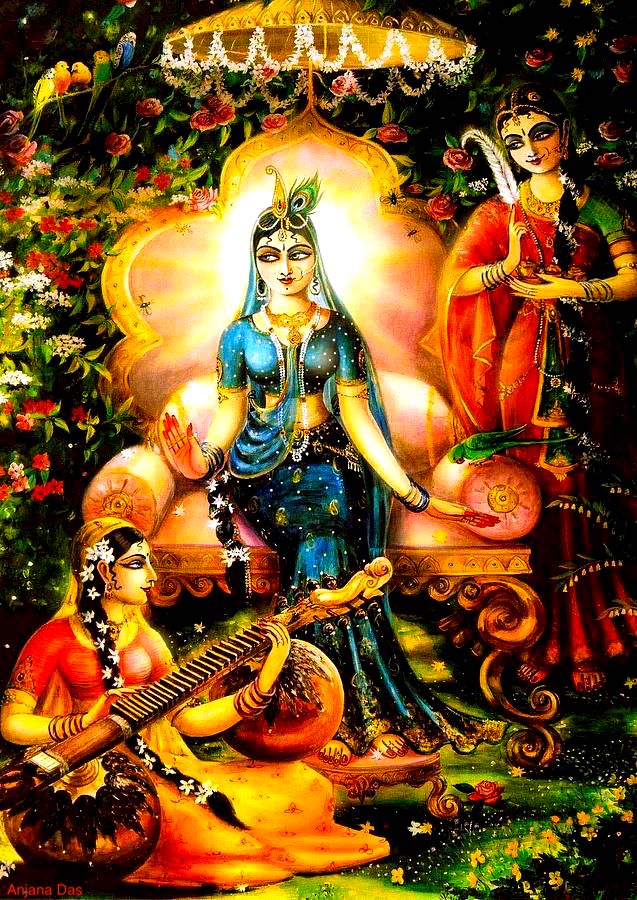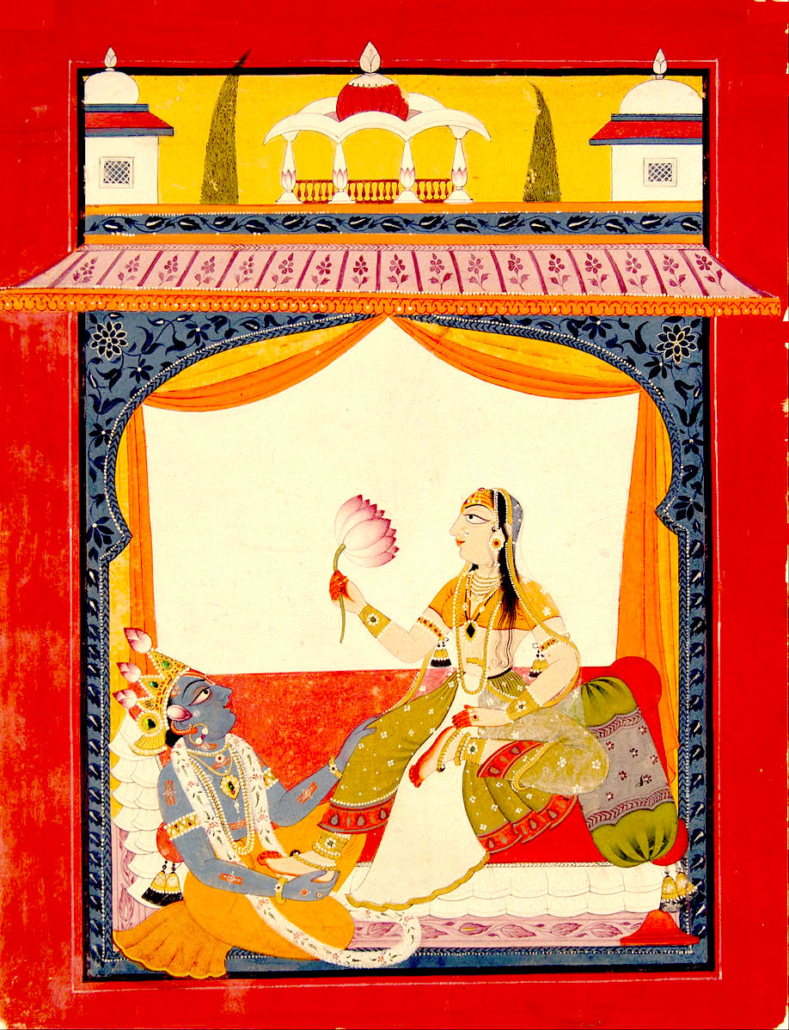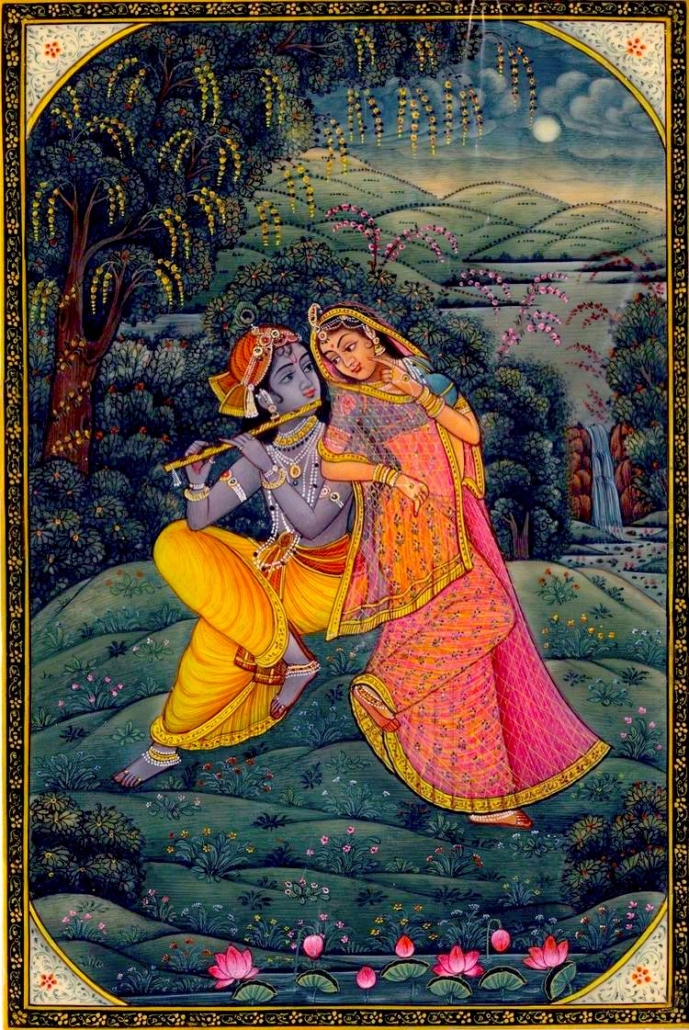Mahanidhi Madan Gopal Das
This series of posts will present facts (tattva) regarding the identity, moods (gopi-bhava), intimacy and sevas of Srimati Radharani’s beautiful and talented handmaidens known as manjaris, kinkaris, or dasis.
Also we will present many astonishing and wonderful lilas to highlight the manjaris most personal and confidential sevas to Srimati Radhika and Her dearest Priyatama Shyamasundara.
The information here is based on the commentaries of Advaitavamsa Acharya 108 Sri Ananda Gopala Goswami and 108 Sri Ananta Dasa Babaji Maharaja taken from “Vilapa Kusumanjali” and “Radha Rasa Sudhanidhi” translated by Sri Advaita Dasji.
Manjari Tattva: My Radha is Raseshvari
Why is Srimati Radharani called “Raseshvari”, the Queen of the rasa-lila? The extraordinary fortune of Sri Radha is established in the Maha Rasa wherein Sri Krishna left millions of gopis to be alone with Srimati Radharani.
Sri Krishnadas Kaviraj Goswami says:
radhe -saha –krida -rasa -vrddhira karana
ara -sab -gopigana -rasopakarana
radha -vinu -sukha -hetu –nahe -gopigana
“All the other gopis help increase the joy of Krishna’s pastimes with Radha. The gopis act as the instruments of Radha-Madhava’s mutual enjoyment. Without Radha, however the gopis cannot make Krishna happy” (Caitanya Caritmarita 1.4.217-218).
Although the Vraja-gopis have different forms, flavors and natures, they are all Radha’s expansions. The gopis are Krishna’s shaktis and mahabhava -svarupini Sri Radha is their fountainhead, hence Radha alone is called Raseshvari. Without Radhika, Krishna gets no taste in the Rasa-lila. Radharani’s extraordinary madanakhya -maha -bhava is not present (to the full extent) in any of the other billions of gopikas, hence all them cannot fulfill Krishna’s desire.
Although millions of gopis are dancing along, Krishna’s mind falls only on Radha. Radha Govinda are both totally absorbed in tasting each other’s love. For Shyamsundar the greatest and most desirable rasa of Vraja is maha bhava, and Sri Radha has the parama rasa called madana –maha -bhava, hence Radha is called Raseshvari.
Sensitive devotees will directly experience this pastime by hearing about it. Their purified hearts are like clear mirrors that will directly reflect Radha-Krishna’s lila-rasa, which will spontaneously manifest in them.
Sri Jiva Goswamipada writes (Bhakti Sandarbha 304): tad -drshatv –abhimanen -api -siddhir –bhavatiti, “Simply by considering oneself to belong to Radharani one attains perfection.” In other words, a manjari bhava upasaka always thinks, “Radharani is mine and I belong to Radharani. I really feel that I’m actually with Radha!” Nothing but this will please the heart of a raganugiya sadhaka.
Manjari Tattva: Vivid Smarana
When one reads Sri Raghunatha Dasa Goswami’s descriptions of Radha-Madhava’s different pastimes like rasa-lila, it seems as if Sri Raghunatha Dasa Goswami is standing directly in the Rasa-sthali. That’s how vivid his visions are! When the devotee becomes advanced in smarana one will no longer think: “I’m doing smarana.”
One will feel as if one is directly experiencing the lilas in transcendental revelations. Through constant meditation the heart becomes ripe, and then the transcendental revelations come to enhance and nourish the sadhaka’s lives. Engagement in the material world will lessen and attachments to sense-objects will vanish. Gradually the visions will become deeper and deeper. There is nothing sweeter than this in the world.
Radharani’s manjaris ki jai! Jai Jai Sri Radhe!

